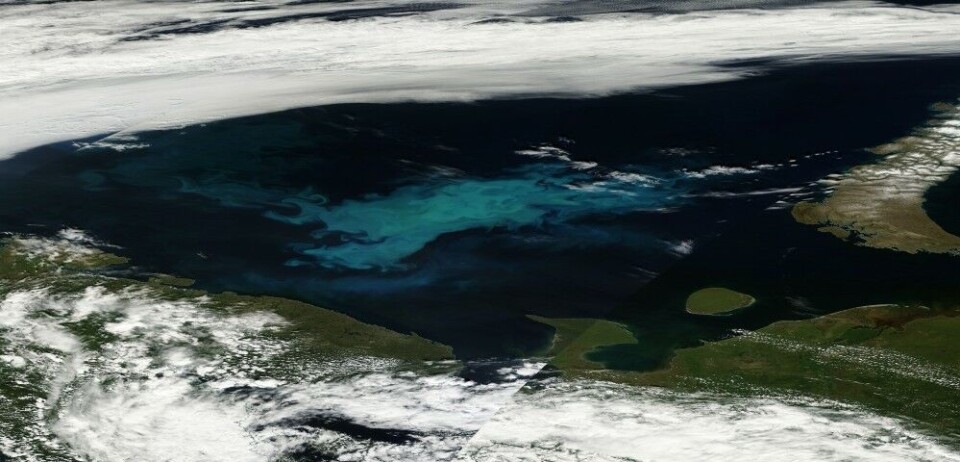
Spectacular Barents Sea plankton bloom
Immense blooms of the alga forming the turquoise colored belt now stretching across the Barents Sea may be linked to warming Arctic.
Fascinating; the 2-10 micrometer small Emiliania huxleyi alga is not visible to the naked eye, but when swimming around with his trillions of friends highly visible from space.
The Barents Observer has downloaded this space image of the Barents Sea from NASA’s online Worldview service, daily updated with new satellite photos from around the globe.
Over the last two weeks, the huge milky turquoise colored belt has developed in the area from north of the Varanger Peninsula in Norway towards Novaya Zemlya in the Russian Arctic.
Although overclouded weather most days, the increase in alga are visible on the space images from late June until yesterday’s image. The alga belt is best visible on the July 6th image, when most of the eastern Barents Sea had blue skies.
Padmini Dalpadado is scientist with the Norwegian Institute of Marine Research. She says to the Barents Observer that blooms of this alga in the Barents Sea is not a new phenomenon, but could still be a result of warming.
“A 20 year satellite based study on Emiliania huxleyi [the alga] in the Barents Sea indicates that though the blooms are not a new phenomenon, the immense blooms observed in the recent years may be linked to warming in the region.”
Dalpadado explains that the intensity of the blooming of this species in the Barents Sea may vary from year to year, likely reflecting varying environmental conditions in the regions.
“The algae are not commonly found in the Barents Sea, though it is not so uncommon in the Norwegian fjords,” Padmini Dalpadado says.
With the Marine Research Institute, she works as an expert on predator-prey interactions between zooplankton and fish with focus on climate effects on the Barents Sea ecosystem dynamics.

Highly visible color of the sea has a natural explanation according to Dalpadado. “Due to its calcium carbonate skeleton, large concentrations of this alga appear as milky turquoise patches in the ocean.
Today, the alga belt covers and area of several hundreds of kilometers, mainly in the eastern part of the Barents Sea.
The 2004-research publication linking blooms of Emiliania huxleyi in the Barents Sea with global warming points to the five-year continuous stretch of blooms that occurred from 1999 to 2003.
Smyth, T. et. al.
The research paper also stated: “If global warming continues to trigger increased warmth and freashwater runoff in the region then there may be an increased frequency of coccolithophore blooms within the Barents Sea.”
The paper was published by the three British marine- and ocean scientists T. Smyth, T. Tyrrell and B. Tarrant.
In recent years, the Arctic, including the Barents Sea, has seen a heatwave without similarities in the world.
The first months of 2016 have been a continuation of the extreme heat wave seen in the high Arctic in late December last year. Yesterday, the Barents Observer published an article from the circumpolar news-network Eye on the Arctic headlining that June had yet another record for sea ice loss. Low sea ice records have been set for every month this year except March.
Most parts of the Barents Sea has been free of sea ice all winter, including waters as far north as beyond the island of Spitsbergen on the Svalbard archipelago.
















